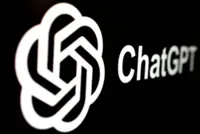It only takes three to seven seconds of your voice for a scammer to clone it into whatever they would like. — AFP
“Please leave your name and number after the beep.”
The fairly common and generic phrase is sometimes all a scammer needs to steal your voice, security experts warn.
Berkshire District Attorney Timothy J. Shugrue’s office held a workshop on organised retail crime and financial fraud. About 178 people signed up for the workshop, including law enforcement and local retailers.
“I think people want to talk about it, they want to hear it, they wanna know about it,“ Shugrue said. ”They want to protect themselves. And they want to protect their business.”
Speakers at the workshop included Ben Dugan, executive director for central investigations for CVS Health; Mark Solomon, international president of the International Association of Finance Crimes Investigations; Ryan Kearney, general counsel for Retailers Association of Massachusetts; and Kelly Kemp, second assistant District Attorney at the Berkshire District Attorney’s Office.
One part of the workshop was about phone scams that can steal people’s voice using artificial intelligence (AI).
Shugrue tells his residents to not even answer an unknown number with “hello.”
“I tell them, don’t even say hello because they’re trying to record your voice,“ he said. ”Just try to listen. Wait. If you don’t hear a voice coming on, it usually means it’s gonna be a scam.”
If you do need to say something, disguise your voice.
For Shugrue, you might hear him answer the phone saying “I don’t like spam” in the voice of Monty Python.
It only takes three to seven seconds of your voice for a scammer to clone it into whatever they’d like, Solomon said during his presentation at the workshop Monday. It’s also not very expensive to do.
That means a personalised voicemail greeting could be used by scammers. Instead, security experts suggest using the automated voicemail option.
The Sharon Police Department previously warned in Massachusetts that calls that appear to be from the doctor’s office could be a scam. The phone numbers are “spoofed” to look real by appearing as the doctor’s office in the person’s caller ID.
“Spoofing is when a caller deliberately falsifies the information transmitted to your caller ID display to disguise their identity,” the Federal Communications Commission states. “Scammers often use neighbor spoofing so it appears that an incoming call is coming from a local number, or spoof a number from a company or a government agency that you may already know and trust.”
Combining the two tools, the FCC is warning this is an elevated “grandparent scam.”
“Often the imposter claims to have been in an accident or arrested. The scammer may ask the grandparent ‘please don’t let mom and dad know,’ and may hand the phone over to someone posing as a lawyer seeking immediate payment,” the FCC said.
But it’s not just happening to grandparents – or even those bad at technology.
“It looked exactly like my sister was calling,” Beth Royce shared on TikTok, stating she answered the phone because her sister’s contact popped up.
But on the other end a man was screaming at her and a woman was crying in the background. He asked for money.
“I’m not an idiot. I’m so good at spotting phishing emails,” she explained. But this, she said, sounded real.
Royce said she sent the man money.
“I was terrified he was going to kill my sister,” she said in the video.
While she was on the phone, her mom called the police then tried to call the daughter who they thought might be kidnapped.
“And my little sister picked up,” she explained. It was all a scam.
Solomon also showed people a video of how easy it is to make deepfake photos and videos. The deepfake videos make it look and sound as if someone else is saying whatever the creator wants.
“How scary is that,” he asked.
The photos and videos can be turned into people who share their faces online, especially social media like LinkedIn.
It also means submitting a photo or video to prove it’s you, isn’t reliable anymore – even if you’re talking.
Companies, such as banks, are having to look at the meta data within the photos and videos to try to decide if they’re real or not, Solomon said.
He recognised that it sounds scary but there are real ways to protect yourself.
“How many of you are taking your photos off LinkedIn and deleting your voicemail,” Solomon asked the crowd at the end of the workshop Monday.
The crowd nervously laughed. – masslive.com/Tribune News Service





